I am trying to make a system that acts as a constant current/power load. At the time I am working with the power electronics, but I am having some trouble with the MOSFET in the circuit.
Below is a symplified schematic:
A power supply is connected to IN_A and IN_B, the input voltage needs to be rectified so the MOSFET's drain voltage is always higher than its source voltage.
The input voltage is rectified with a full bridge rectifier whose + output is connected to the drain and its - output is connected to the source of the MOSFET. The - pin of the rectifier is also connected to ground.
This common ground connection is present in order for the MOSFET Vgs to get referenced to the common ground. This is done in order to fully turn on/ off the MOSFET with the 12V swing the potentiometer is capable of provide to the gate of the MOSFET.
The principle of operation of this circuit is that the current flowing through the MOSFET is proportional to the voltage on its gate. We can make an analogy that the MOSFET is acting as a variable resistor, which is actually true, because in order for the MOSFET to limit the current draw it changes the Rds parameter. With this in mind we can dissipate a lot of power in the MOSFET.
The problem I am facing now is that my MOSFETs keep blowing out when loaded. I have tryed several different MOSFETs with the same results. When loading the circuits I am using a 24V power supply with a 3A current limit. I have noticed that the circuit works fine with currents up to 2A with a MTP7N20 (Is-7A Vds-200V), but when I tried using an IRF540 or an IRFZ44 those blow up almost instantly.
I suspect that it has to do with a thermal dissipation issue mainly because niether Vgs_max or Vds_max was exceeded on any of the cases.
It is important to say that the MOSFET has a huge heatsink that is electrically isolated and also that is has a layer of thermal grease to help with heat transfer.
Power dissipation on the MOSFET will always be lower than the whole system dissipation because there is a voltage drop across two of the diodes of aproximately 1.4V, (0.7V per diode.)
There is no good datasheet for the MTP7N20, but here are the absolute maximums for the IRF540 and IRFZ44.
Notice that IRFZ44 has a maximum power dissipation of 150W and a continuous drain current of at least 36A (@100ºC.)
Notice that IRF540, instead, has a maximum power dissipation of 150W and a continuous drain current of at least 20A (@100ºC.)
With 24V @3A power supply a maximum of 72W should be dissipated in the system. Hence I thought that the MOSFET won't get damaged.
Maybe I only need a bigger heatsink.
What kind of protection circuitry can I use in order to protect the MOSFET from blowing up?
I know that maybe I am over simplifing the driver circuit, but this should in theory work, right?
Please let me know what you think.
